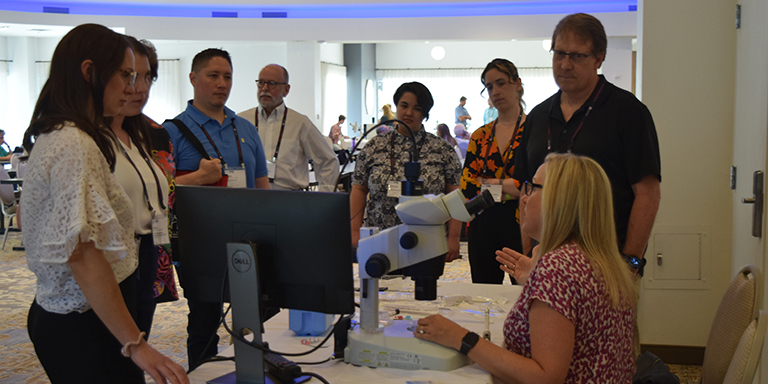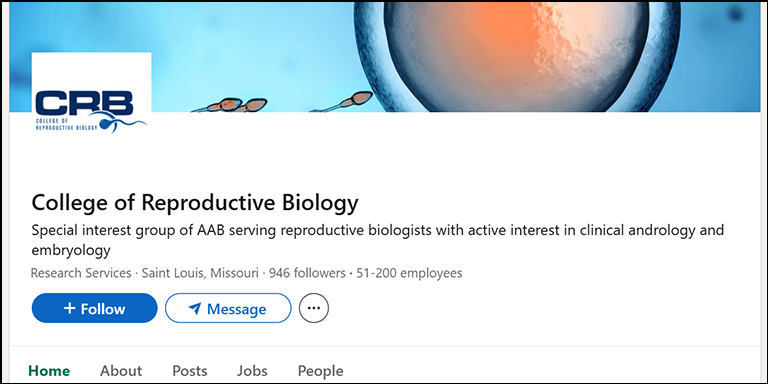Report - ASRM's 68th Annual Meeting
 |
| Dean Morbeck, Ph.D., HCLD/CC(ABB) |
Beautiful San Diego was the location of ASRM’s 68th Annual meeting and this short note is a far cry from replicating either the content or the setting, especially now that the snow is knee-deep here in Minnesota! While you dream about the warm southern California sun, I’ll share what I found most interesting at the meeting. Of course, it is impossible to cover the entire meeting in a short column, so I’ll stick to the theme of prize abstract O-1. Ah – the prize paper presentation – where nary was a place to stand as is tradition for meetings, the room held about a third of the audience….
Though there were many excellent presentations on non-invasive methods of embryo selection, whether it’s cumulus cell analysis, microRNA in media, time-lapse or blastocoel fluid analysis (mostly non-invasive?), genetic testing is far ahead and gets center stage at this point. Which brings me to a question – what should we be calling the procedure moving forward? The first paper, another joint effort between Colorado Center for Reproductive Medicine and Reproductive Medicine Associates of New Jersey, steers clear of the controversy by avoiding the term PGS and instead sticks to CCS (comprehensive chromosome screening). If I could get a show of hands – how many of you struggle with the PGD/PGS terminology? I know I do, and it seems unnecessary at this point. Perhaps we should agree on a new term – PGT – preimplantation genetic testing. But I digress….
The first paper, a randomized controlled trial presented by Bill Schoolcraft, highlighted the incredible promise CCS holds for good prognosis patients of advanced maternal age. With an average age over 39, AMH of 2.5 and AFC 16-20, this is a special group of patients who had a 40% implantation rate with a fresh blastocyst transfer without testing versus a 60% IR of CCS/vitrified blastocysts. Just as impressive, there were no miscarriages in the latter group vs 20% in the controls. If you can get a lot of oocytes, grow and vitrify blastocysts well, as well as perform TE biopsies, then this is the way to go, right? Another show of hands – how many 39 year olds with an AMH of 2.5 and AFC of 20 come through your clinic? If you’re center is like ours, not very many. In fact we’re more likely to have an average of 2.5 embryos than an AMH of 2.5 for patients >39. So the jury is still out on how we’ll apply this technology to a more typical 40-year-old patient.
| CRB 2012 Reception - View Pictures |
The other most significant reports on PGT dealt with another challenging patient group – those with recurrent pregnancy loss (RPL). Patients with 3 or more pregnancy losses were studied by the CCRM/RMA-NJ collaboration, and while again these were patients with good ovarian reserve with an average of 7 biopsied blastocysts per patient and pregnancy rates were a staggering 80%, the most impressive number was a loss rate of only 3.4%. The NYU group showed similar miscarriage rates in a study of 181 patients with RPL. With a theoretical chance for SAB of 40%, it will be hard to look a couple in the eyes and not offer them this technology. Unfortunately, not all of them will have blastocysts to biopsy and in the case of the CCRM/RMA-NJ study, 1 of 5 patients had no euploid embryos for transfer. It’s clear that while PGT can help many of these patients, navigating through these numbers to present a realistic, patient-specific chance of success will be a challenge.
While there are some who are proposing that TE biopsy is the way of the future for all patients, I’m still holding out hope that we can get there with non-invasive methods. We are fortunate to work in a dynamic field, full of innovation and change. With advancements in technology, we can expect exciting developments for years to come.
News Articles
02/05/2013
From the President
02/05/2013
Meeting Committee - Symposium Program
02/05/2013
Legislative Committee Briefs
02/05/2013
Attend the 2013 CRB Symposium
02/05/2013
Membership and Credentialing Committee
02/05/2013
Report - ASRM's 68th Annual Meeting



